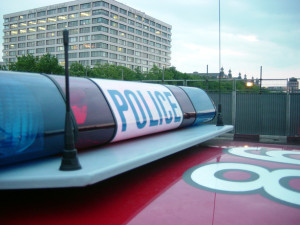 In Commonwealth v. Moore, the Supreme Judicial Court clarified the admissibility of Bowden evidence and affirmed the defendant’s convictions of first degree murder and related offenses, despite the occurrence of two trial errors.
In Commonwealth v. Moore, the Supreme Judicial Court clarified the admissibility of Bowden evidence and affirmed the defendant’s convictions of first degree murder and related offenses, despite the occurrence of two trial errors.
The background was as follows. The victim “was shot … by a masked gunman during an armed robbery and home invasion.” At the time, the victim was sharing an apartment with a roommate (LaPalm). “The victim sold cocaine and marijuana, and she kept large sums of money … in a small … strongbox.” On the date in question, the victim and LaPalm were at home when “a masked African-American man carrying a gun entered the [apartment]. The intruder was dressed in black and wore a ski mask covering his face; he was approximately six feet tall and slim.” LaPalm ran from the apartment. As she did so, she “saw a second man standing at the foot of the stairs outside…. He was approximately five feet, six inches tall, was dressed in black, and was wearing a ski mask.” LaPalm encountered a neighbor (Brown) and told him what had happened. Moments later, Brown saw two men wearing masks and dressed in all black leave [the victim’s] apartment. One of the men was shorter than the other, approximately five feet, six inches tall; the other was over six feet tall and thin. The two men ran past Brown’s motor vehicle toward a light colored minivan. One of the men was carrying a black box. Although he was unable to see either perpetrator’s face, Brown believed that he saw the hands of both men and concluded that they were African-American.” Around the time of the incident, three college students “who lived in a house next to the [victim’s] apartment complex” “saw two African-American men walking out of [their] backyard” towards the victim’s apartment complex. Also around the time of the incident, other neighbors saw an unfamiliar minivan parked nearby; they noted the license plate number and the police ascertained that the vehicle was registered to the defendant’s mother. A short time later, the police “observed [the vehicle] idling on a street; the defendant and his brother were inside…. At some point …, the defendant said, without any prompting, ‘That’s my little brother. He had nothing to do with what happened earlier.’” Police conducted showup identification procedures during which two of the college students positively identified the defendant as one of the men who had been in the students’ backyard. The defendant was arrested. Forensic testing revealed the presence of the victim’s DNA on the defendant’s T-shirt and inside the minivan in which he was apprehended.
In its decision, the SJC described the context of the first trial error as follows. “At trial, the defendant sought admission of an audio recording of the police radio broadcast published after the shooting that contained various witness descriptions of the suspects.” “Different portions of the … broadcast described the perpetrators as: five feet, five inches tall; five feet, six inches tall; five feet, seven inches tall; and six feet tall.” At the time, “the defendant was approximately six feet, two inches tall.” “Defense counsel argued that the audio recording was relevant to show that the police investigation was inadequate, thus pursuing a so-called Bowdendefense,” as discussed in Commonwealthv. Bowden, 379 Mass. 472 (1980). “The judge concluded that the portions of the recording containing physical descriptions of the perpetrators was hearsay, and excluded them.” On appeal, the SJC opined that the judge’s ruling was erroneous. In the Court’s view, the descriptions were not hearsay because they were not offered for their truth, but rather, “to show that, once police stopped the defendant, they focused their investigation on [him] to the exclusion of all others, even though the defendant did not match the physical descriptions in the broadcast…. Therefore, the portions of the audio recording that contained descriptions of the perpetrators were relevant to the defendant’s Bowden defense” and “should have been admitted at trial.”
Regarding the second trial error, the SJC agreed with the defendant’s argument that defense “counsel rendered deficient performance by not impeaching [eyewitness] Brown” with inconsistencies between his testimony before the grand jury and his testimony at a suppression hearing, regarding the ethnicity of the shorter of the two perpetrators whom he had observed.
Despite the two trial errors, the SJC concluded that reversal was not required because there was overwhelming evidence of the defendant’s guilt.
In the course of addressing the Bowden issue in this case, the SJC noted that “[t]he standard of admissibility for Bowden evidence articulated in Commonwealthv. Silva–Santiago, 453 Mass. 782, 803 (2009), did not accurately reflect the appropriate balancing test…. We therefore clarify: Bowden evidence is admissible so long as its probative value is not substantially outweighed by its prejudicial effect.”
Despite the SJC’s disappointing decision in this particular case, the SJC’s clarification of the admissibility of Bowden evidence is an important one. If you or a loved one is charged with a crime and the police failed to properly or fully investigate issues in the case, it is critical that you have an attorney who can persuade a judge to admit evidence of such failure(s) at trial, and who can cogently present this evidence to a jury. Attorney Daniel Cappetta is a skilled and experienced attorney who has presented Bowden arguments in numerous cases, and who will use the clarification in this case to zealously represent his clients moving forward. Put his skills to work for you and call him for a free consultation.
 Massachusetts Criminal Lawyer Blog
Massachusetts Criminal Lawyer Blog

